Keynote Speakers
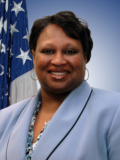
Pamela Whitley
Assistant Administrator for NextGen (A), FAA
Tuesday, Day 1 Plenary
Pamela Whitley is the acting assistant administrator for NextGen. The Office of NextGen (ANG) is responsible for championing the evolution of the National Airspace System (NAS). Ms. Whitley oversees more than 900 federal employees and a $2 billion budget. Prior to her current position, Ms. Whitley served as the deputy assistant administrator for NextGen with responsibility for the organization’s budget and ensuring alignment between resources and commitments. Ms. Whitley joined the FAA in 1993 as an electronics engineer responsible for the development of standards for airport electrical equipment and lighting. She has held positions in the Airway Support Facilities Division, the Office of Technology Development, and the NextGen Integration and Implementation Office. Ms. Whitley has been involved with the Next Generation Air Transportation System (NextGen) from its planning stage.
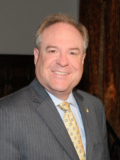
Jim Williams
Program Executive, UAS Integration Office, FAA
Wednesday, Day 2 Plenary
Mr. Williams was selected in March of 2012 to lead the newly formed Unmanned Aircraft Systems (UAS) Integration Office. The new office combines the formerly independent efforts of the Air Traffic Organization and the Aviation Safety Organization. He is responsible for coordinating all aspects of the FAA’s efforts to integrate UAS into the National Airspace System (NAS). This includes activities for rule making, standards, guidance material, industry coordination, interagency coordination, research and development, and planning to support UAS integration. Mr. Williams was the Director of Engineering Services from 2005 to 2012. In this position, he was responsible for the National Airspace System (NAS) Enterprise Architecture, the interface standards and requirements for all NAS equipment, the Information Systems Security Architecture, and the NAS level Safety Architecture.
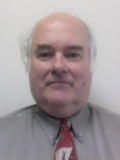
Michael Harrison
Tuesday, Day 2, Evening Exhibitor Keynote Speaker, “Droning on About UAVs”
Mike J. Harrison is an aviation evangelist associated with Aviation Management Associates in Alexandria, Virginia. He has over 44 years of aviation experience, 35 with the U.S. Air Force and the FAA in various capacities from being a pilot, aviation safety, capacity development, research and development of operational concepts ranging from airports to space. From 2005 to 2010 he served as the editor of The Journal of Air Traffic Control. While with the FAA, he was the director of architecture and systems engineering until his retirement in 2002. For the last 9 years, he has worked to advance the details on the next generation air transportation system and its European counterpart efforts to change how air traffic management is provided. He holds a bachelor’s and master’s degree in biology from Oregon State University and advanced studies from American University.
Plenary Panel Chairs
Tuesday, Day 1, “Next Generation Airspace Developments”
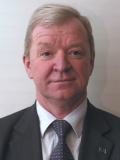
Bo Redeborn
Bo Redeborn started his training as an air traffic controller at the Swedish ATS Academy in 1972 and was subsequently employed by the Swedish Civil Aviation Authority (CAA). In the 1980s he spent six years as an ATCO in Jeddah, Saudi Arabia, on an ICAO Technical Assistance mission, then returned to the CAA and took up managerial functions with increasing responsibility. He joined EUROCONTROL in February 2004 as director, ATM strategies and was appointed to his current position as principal director ATM on 1st January 2011. He is responsible for overseeing the organization’s ATM policy and development and for managing high-level strategic relations with key ATM partners. He also heads the Directorate of SESAR and Research which encompasses the activities delivering EUROCONTROL’s contribution to the SESAR Joint Undertaking Work Programme.
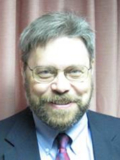
Steve Bradford
Steve Bradford is chief scientist for architecture and next generation (NextGen) development in the FAA’s NextGen Office. In this role he has participated in the development of the Joint Planning and Development Office’s (JPDO) NextGen concept, the RTCA National Airspace System (NAS) Operational Concept and the ICAO Air Traffic Management Operational Concepts Panel (ATMCP) Global Concept. He is the chairman of the Technical Review Board which monitors technical decisions related investments and the enterprise architecture. He also works with elements of the FAA and the JPDO to develop midterm plans and five year budget requests to implement NextGen. He has a leading role in several new activities with SESAR Joint Undertaking (SJU) and has led several cooperative international efforts via action plans with EUROCONTROL. Previous activities include leading efforts to validate future concepts and developing the FAA’s NAS enterprise architecture.
Wednesday, Day 2, “UAS in the NAS”

Ed Waggoner
As director of NASA’s Integrated Systems Research Program Office, Dr. Edgar G. Waggoner is responsible for planning, management and evaluation of the directorate’s efforts to conduct integrated, system-level research on promising vehicle and operational technologies in a relevant environment that meet energy, environmental and mobility objectives. He also supports the associate administrator in a broad range of mission directorate activities, including strategic and program planning; budget development; program review and evaluation; and external coordination. Previously he was on assignment to the Joint Planning and Development Office in Washington, DC, where he served as director of the Interagency Architecture and Engineering Division responsible for technical leadership in the development of the Next Generation Air Transportation System (NextGen) Enterprise Architecture.

Michael Standar
Michael Standar is the chief strategies and external relations at the SESAR Joint Undertaking (SJU) based in Brussels, Belgium. He became chief of air traffic management in July 2011 and was promoted to his current position in January 2012. He was an active Swedish member of ICAO Air Traffic Management Operational Concepts Panel (ATMCP) developing the ICAO Global Air Traffic Management (ATM) Operational Concept Document, which continued into the Air Traffic Management Requirements and Performance Panel (ATMRPP). In the early 1990s, he was offered a post at the Swedish Civil Aviation Administration (CAA) headquarters, later the LFV (Swedish Civil Aviation Administration) ANS (Air Navigation Services) service provider. There, he was promoted first to head units for ATM operational developments and operational support and later head of the business area of LFV’s ATM support and development before taking up duties as LFV director for ANS business development.
Thursday, Day 3, “Airport Surface Movement in the NextGen Era”
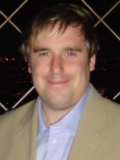
Paul Planzer
Paul Planzer has been manager of Air Traffic Control Programs since March 2010, working closely with industry and government partners to continue the growth of the Air Traffic Control Association (ATCA). Previously, he worked in business development at the Washington Consulting Group (WCG) from 2008 to 2010, initiating new business opportunities and working with proposal teams to capture new business, including WCG lead on SE-2020; Federal Aviation Administration Contract Tower Program solicitation; East Hampton Contract Tower; international training programs in China, Cambodia, India, Taiwan; unmanned aerial vehicle (UAV) procedures, and Grayling Tower. From 2005 to 2008 at WCG, Planzer was flight service operations and procedures specialist and an original member of the team that created and implemented the Flight Service Station (FSS) operations center.
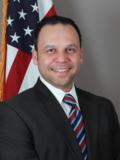
Moderator: Mariano Alicea Jr.
As senior vice president, corporate development, of Sabre Systems, Inc., Mariano Alicea Jr. is responsible for the management of all internal and external business development, marketing communications, and M&A activities focused on federal civilian agencies, defense, international and commercial clients. An external focus on business development includes new market identification and entry, business diversification, adjacent market entry, new and emerging customer development, and intelligence gathering; internal business development includes pipeline development and management, capture planning, proposal development, cost and pricing, small business strategy, and market research and analysis. Prior to joining Sabre in 2013, Mr. Alicea worked for TASC Inc., where he served as the vice president of marketing and business development for the Defense/Civil Group. Before joining TASC, Mr. Alicea worked for the Federal Aviation Administration (FAA) at the William J. Hughes Technical Center and FAA Headquarters on automation, weather and communication systems in En Route, Terminal and Oceanic domains.
ICNS Conference Chairs
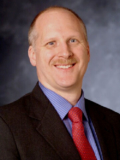
John R. Moore
Conference General Chair
John R. Moore is a Principal Systems Engineer at Rockwell Collins in Unmanned Aircraft Systems (UAS) Platform Systems Engineering. Mr. Moore has 31 years of avionics engineering and project management experience, with emphasis on major aircraft platform integration programs. For the past ten years he has focused on UAS avionics architecture development, with emphasis on civil airspace integration. Mr. Moore is currently Principal Investigator in a Cooperative Agreement with NASA to develop and demonstrate a prototype Control and Non-Payload Communication waveform suitable as a basis for a civil certifiable UAS control link. Mr. Moore was Chief Engineer for the U.S. Air Force KC-135 Global Air Traffic Management program, which provided civil-compliant Communication / Navigation / Surveillance / Air Traffic Management (CNS/ATM) solutions to the strategic tanker fleet to enable continued access to global airspace. Mr. Moore has worked throughout his career in standards development for various CNS/ATM capabilities, including participation in RTCA SC-181, SC-189 and SC-203 as well as ODIAC in Europe.
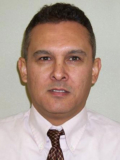
Rafael Apaza
Technical Chair
Rafael Apaza is a Senior Communications Engineer for the NASA Glenn Research Center in Cleveland, Ohio. He has over 25 years of project management and technology development for the National Airspace System (NAS). Rafael works in research and development of aeronautical communication technologies and the experimental development of advanced communications systems utilizing modeling and simulation. His responsibilities include management of the NASA Cleveland CNS Test Bed, NAS Data Communications Modeling and Simulation, AeroMACS Technology Development and Unmanned Aircraft Systems (UAS) Modeling and Simulation lead. Rafael worked for the Federal Aviation Administration in Field Engineering, NAS Planning and Research and Technology development from 1987-2011. He holds a B.S. and M.S. in Electrical Engineering from Wayne State University, Detroit and a M.S. in Computer and Information Science from University of Michigan.

